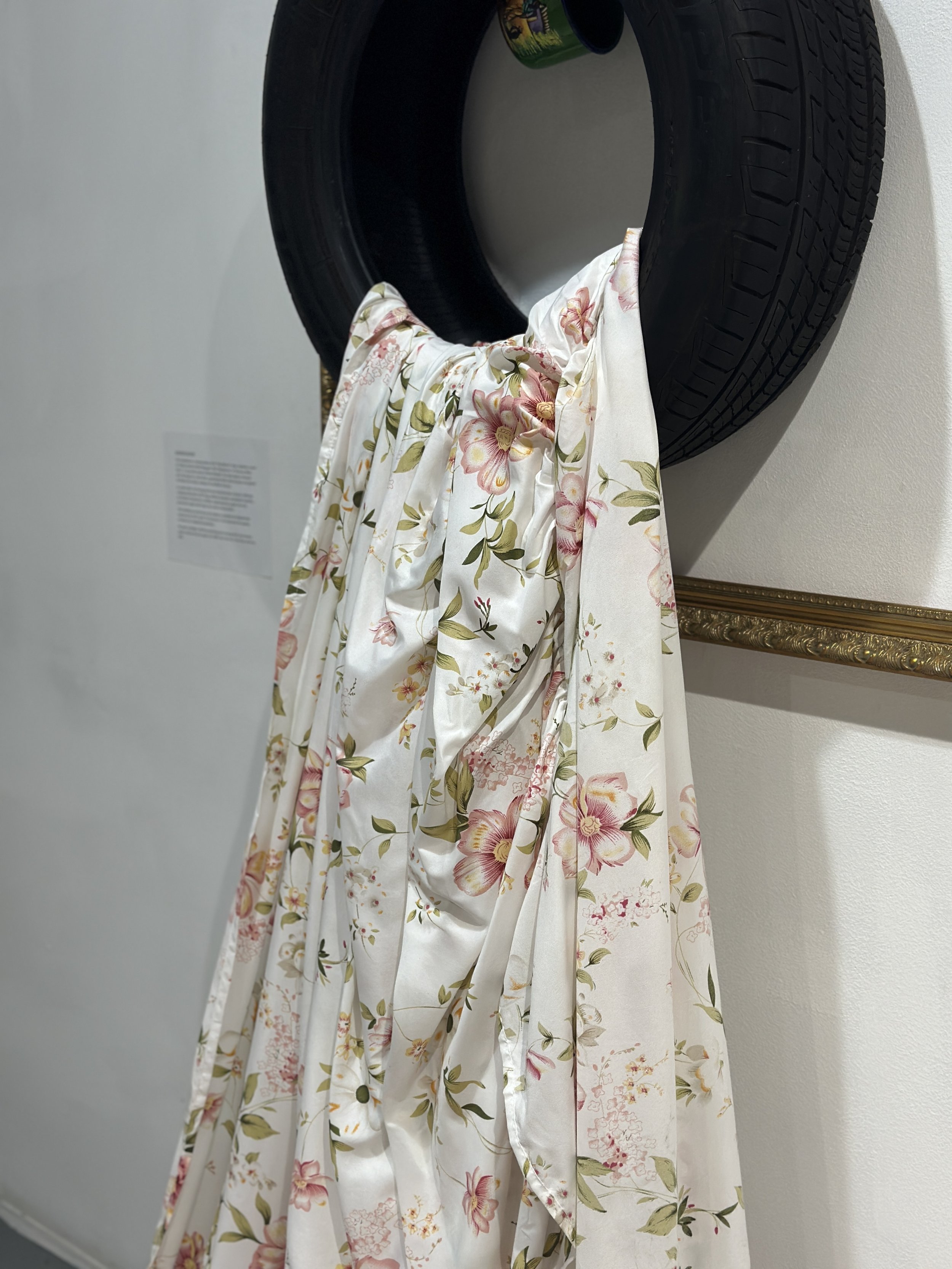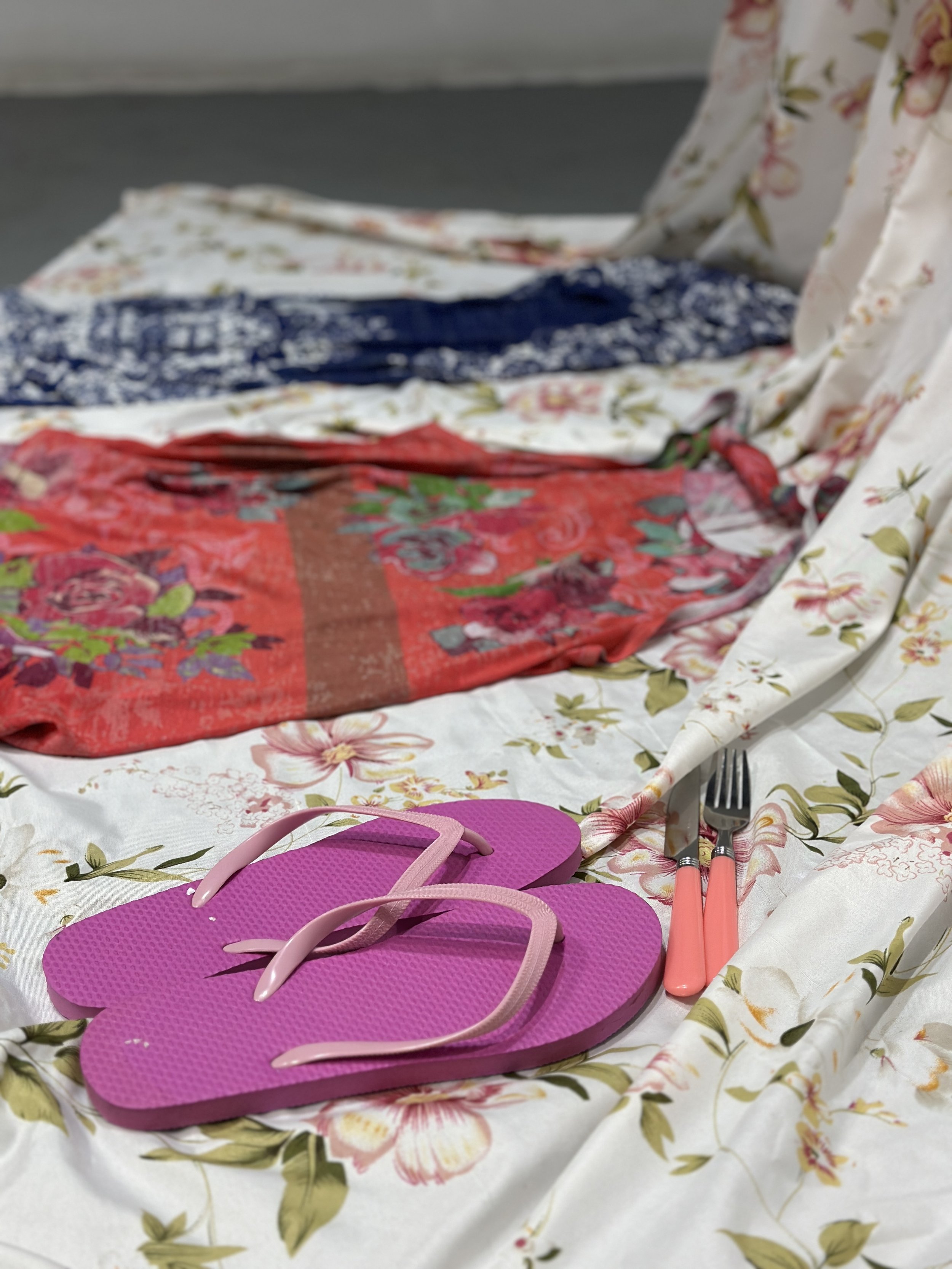Uprooted: Haitian Diaspora and Displacement (Sept 12 - Nov 12 2025)
The works in the show aim to broaden the understanding of displacement beyond the notion that it only occurs during times of war.
Displacement is a reality for many individuals, including those who have an ‘option’ to leave their home countries but do not feel safe returning.
It is often a passive condition faced by many, particularly in the Caribbean. By highlighting these narratives through a collection of portraits, the project seeks to illuminate the ongoing impact on people's lives, emphasizing that it is a common and multifaceted experience rather than a singular event.
While highlighting the strength and resilience of the Haitian spirit, I want the viewers to feel the reality and weight of displacement, the fear, uncertainty, and loss that accompanies leaving one’s home.
Ultimately, I hope my work fosters a sense of connection between viewers and the Haitian community, encouraging dialogue and action in support of those facing similar challenges worldwide.

#KISANAPFEAKMATISAN
#KISANAPFEAKMATISAN (What Will We Do For Matisan, in Haitian Creole), is a hashtag that emerged on twitter as an outcry from people living in Haiti to the Diaspora, in response to the mass shooting and burning of people in Matisan, a tormented neighborhood in the heart of Port-au-Prince, Haiti. The community, in the grip of armed gangs, grapples with neglect from the government and acts perpetrated by the police.
Zevallos recovered bullet casings, instruments of violence, which piece the photographs, to emphasize the countless lives claimed by gunfire.
A Dwelling is Not A Home
“A Dwelling Is Not A Home" is a body of work exploring the impact of displacement of so many immigrants who end up blossoming in the countries causing political and financial unrest within the very homelands they are fleeing.
Basketball is one of the sports that not only represents Black cultural identity but is also a means of escape in providing socio-economic opportunities. The shoelaces wrapped around the model's neck portrays the idea of rest for how boys carry shoes around their shoulders after a game, as well as the impression of choking, because basketball courts have often been used for gang activities/conflicts and violence.
The soil on the rug symbolizes displacement and rebirth.
Although we have 'removed our shoes at the door' when entering a place of exile, it doesn't not mean we are disconnected from our roots. Our challenges are interconnected; there is no separating our shared struggles.
Ti Mache A Piti
In Creole, "Ti Mache A Piti" translates to "the market place is small." This series delves into the lamentable devaluation of the GOURDES, the Haitian currency, while unveiling the multifaceted reasons behind its steady decline.
The native Haitian bourgeoisie, entrusted with the responsibility of leading their people to prosperity, instead embraces a life of shared socio-economic privileges with colonizers, anchored in Western imitations. This abandonment of their core values leads to neglecting the farmers, fishermen, and merchants, who face deceit, corruption, and the influx of expensive imports, siphoning the country's wealth.
The struggling masses, including farmers striving to bring their produce to the marketplaces, find themselves at the mercy of menacing gangs, becoming victims of theft and violence. In a distressing twist, outdoor marketplaces, a lifeline for the populace, fall prey to deliberate destruction by foreign owners of indoor market spaces, seeking to eliminate competition.
The repercussions of such a dire situation are undeniable - when a nation's economy is burdened by reliance on imports, and its own land's produce remains underutilized, the path towards economic disaster is inevitable. This poignant series exposes the harsh realities that have befallen Haiti, urging us to seek solutions for a brighter, sustainable future.
MANIFESTASYON (“PROTEST” in Haitian Creole)
This installation is a reinterpretation of the "Neg Mawon" statue, originally created by Haitian architect Albert Mangones. The "Neg Mawon," or "Runaway Black Slave," is a powerful symbol of Black liberation. The statue depicts a runaway slave blowing into a conch shell, a gesture that rallied enslaved people and ignited the Haitian Revolution, leading to the abolition of slavery
The bed sheets are associated with rest, comfort, and intimacy. They become stand-ins for shelter, security, and identity when uprooted from their original context. The clothing, meanwhile, evokes the immediacy of survival; garments hastily gathered in the face of uncertainty, the bare essentials carried forward into an unknown life. In 2025, amid increasing instability, violence, and economic hardship in Haiti, many young people, particularly women, are risking everything and leaving behind family, language, and culture to chase even the faintest hope of safety. For women especially, clothing takes on another layer of meaning: it shields the body while also telling stories of protection, dignity, and transformation.
This installation uses bed sheets and clothing to symbolize the displacement experienced by Haiti's youth. The inclusion of a tire represents the ongoing revolution of a marginalized population.
Uprooted: Haitian Diaspora and Displacement (photographs)
Haitian Diaspora and Displacement explores the impact of ongoing challenges faced by Haitians, particularly in the context of gang violence, financial and political instability. Recently, over 600,000 people were displaced due to gang violence; and over 12,000 refugee camps currently exist throughout the capital.
Zevallos handmade the concrete frames and chose this material as an ode to the earthquake that hit Haiti in 2012, as most of the buildings are made of concrete. She broke the frames and sealed parts of it to highlight the cracks and attempt of being put ‘back together’, as politicians in Haiti have often pretended to do so while ransacking and stealing the millions of dollars that were donated to the country to help in the rebuilding process.
Haitian currency is also glued onto the photographs to further emphasize the concept of fraud by the Haitian government with the help of various International countries present in Haitian politics. Select parts of the frames are also painted as a memory of how some walls in the streets of Port-au-Prince are painted, but due to limited amount materials, the painting stops unexpectedly.
In modern Haiti, tire burning has become a prevalent form of protest, reflecting widespread discontent with living conditions, insecurity, and political instability. As decades of protests have unfolded, displacement has surged, driven by government neglect and foreign intervention in local politics.
This series portrays the raw emotions and expressions of Haitians navigating their new realities. Each portrait tells a story: a woman peering anxiously from behind a curtain, embodying the fear of being undocumented; a man grappling with the challenges of learning a new language and integrating into an unfamiliar culture. This series sheds light on the complexities of forced migration, the daily lives of displaced Haitians while capturing and preserving the beauty and perseverance of Haitian immigrants.
Gina Rolles
On July 14 2022, Gina Rolles became one of many undividuals unjustly implicanted in a gun trafficking scandal in Port-au-Prince, Haiti. This even was linked to the Episcopal Church. Despite her innocence, My aunt was arrested and imprisoned while those truly responsible remain unpunished.
This patter of wrongful incarceration, where the innocent are detained and the guilty are allowed to walk free, has continued unchecked by the Haitian Government.
This exhibition is dedicated to you, Gina. It stands as a testament to your enduring spirit and the relentless fight of your family for justice on your behalf. Your family’s struggle to clear your name and secure your release remains unwavering.
You are not forgotten. Our commitment to seeking justice for you will never falter.
















